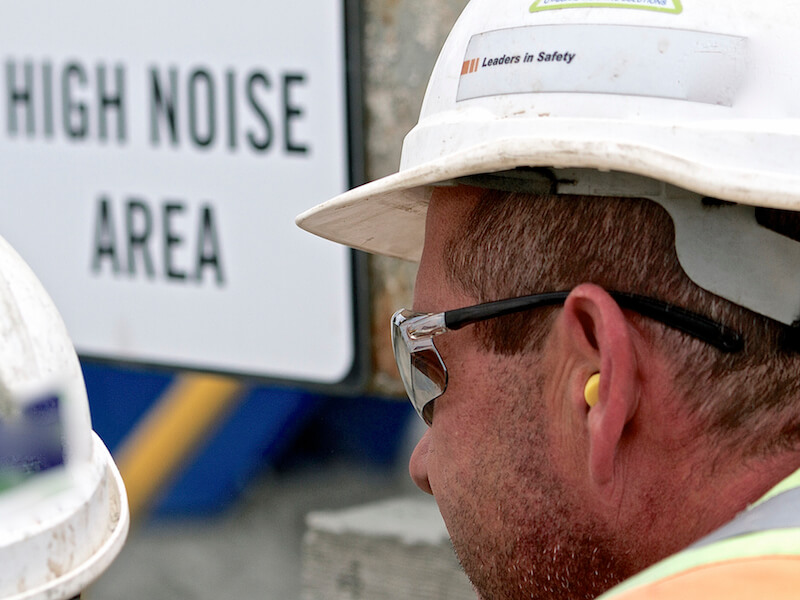
Your hearing can be harmed by a noisy workplace and it can also impact your concentration. Even moderate noise, when experienced for many hours a day, can begin to undermine your hearing health. That’s why it’s really smart to start asking questions like, “what level of hearing protection should I use”?
Most of us probably didn’t even realize there were multiple levels of hearing protection. But it makes sense when you stop to consider it. A truck driver won’t need the same amount of protection that a jet engine mechanic will.
Levels of Hearing Damage
The standard rule of thumb is that 85 decibels (dB) of sound can start harming your ears. We aren’t really used to considering sound in terms of decibels (even though that’s how we calculate sound – it just isn’t a figure we’re used to putting into context).
When you’re sitting in your car in city traffic, that’s approximately 85 decibels. No biggie, right? Wrong, it’s a big deal. It becomes a big deal after numerous hours. Because it’s not just the loudness of the noise that you need to pay attention to, it’s the duration of exposure.
Typical Danger Zones
If you’re exposed to 85 dB of noise for eight hours a day or more, you need to consider using ear protection. But there are some other important thresholds to take note of. If you’re exposed to:
- 90 dB (e.g., lawnmower): injury will begin to happen to your ears if you’re exposed to this level of noise for 4 hours a day.
- 100 dB (e.g., power tools): Anything above one hour is considered harmful to your hearing.
- 110 dB (e.g., leaf blower): Anything above fifteen minutes is considered harmful to your hearing.
- 120 dB (e.g., rock concert): Any exposure can cause harm to your hearing.
- 140 dB (e.g., jet engine): This level of noise will lead to immediate harm and probably pain to your ears.
You’ll want the ear protection you choose to be sufficient to bring the decibel level below that 85 dB level, particularly if you’re exposed to those sounds for any duration.
Make Sure Your Hearing Protection Fits Comfortably
NRR, which is an acronym for Noise Reduction Rate, is a scale used to determine the effectiveness of hearing protection. The higher the NRR, the quieter outside sound will become (temporarily).
The majority of workplaces will have guidelines as to what level of protection will keep your ears safe because it’s essential to have the correct protection.
Comfort is also an important factor to think about. It turns out, comfort is incredibly important to keeping your hearing healthy. This is because you’re not as likely to actually wear your hearing protection if it’s uncomfortable.
What Are my Hearing Protection Options?
You’ve got three basic options to choose from:
- Earmuffs.
- In-ear earplugs
- Earplugs that sit just outside of the ear canal.
There are benefits and drawbacks to each type of protection, but the majority of your hearing protection decision will depend upon personal preference. Earmuffs are a better choice for people whose ears are irritated by earplugs. Other individuals might value the put-them-in-and-forget-them approach of earplugs (of course, at the end of the workday you should take them out for a good cleaning).
Find a Constant Level of Hearing Protection
Comfort is important because any lapse in your hearing protection can lead to damage. If you remove your earmuffs for ten minutes because they’re heavy and uncomfortable, your ears can suffer over the long run. This is why hearing protection that you can leave in for the whole workday is the best choice.
You’re ears will stay healthier and happier if you find the correct degree of hearing protection for your situation.